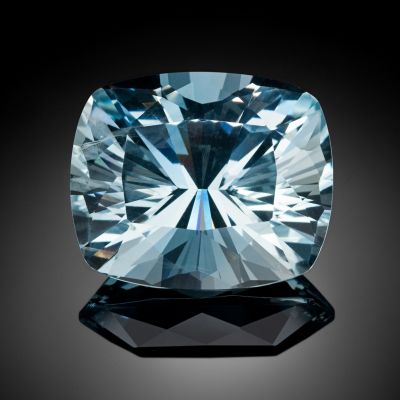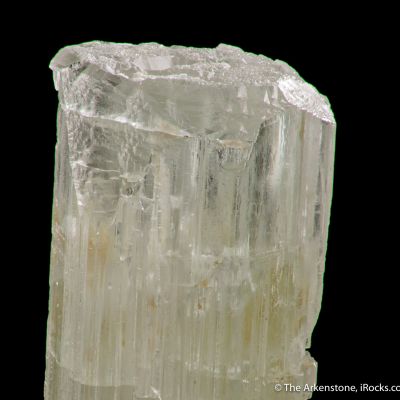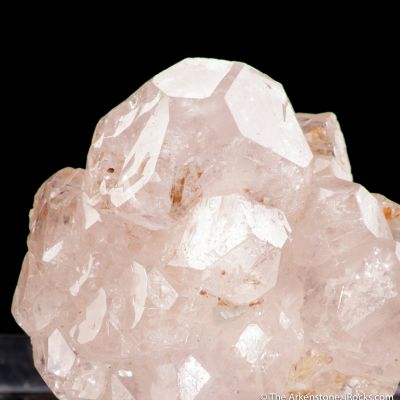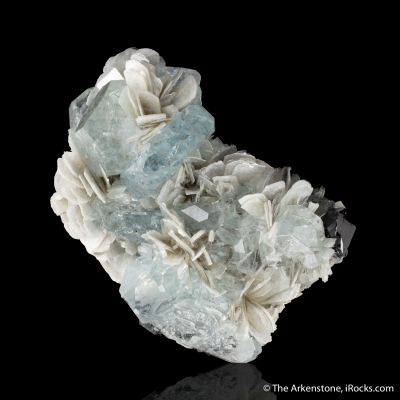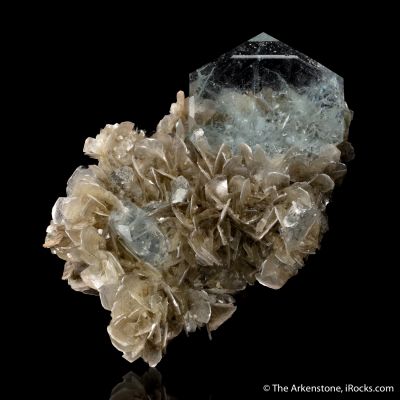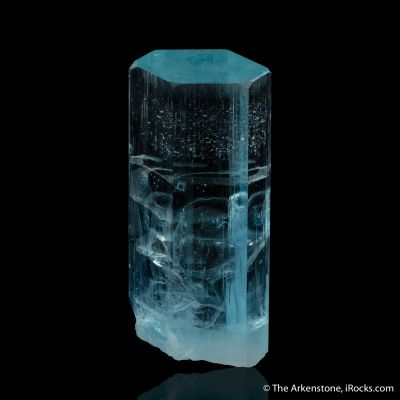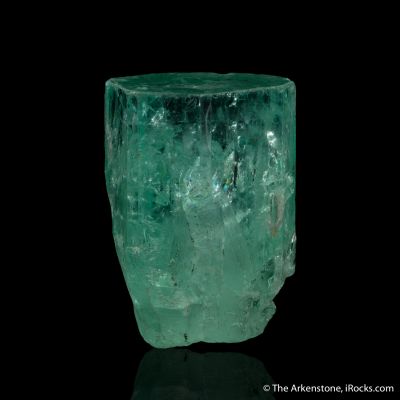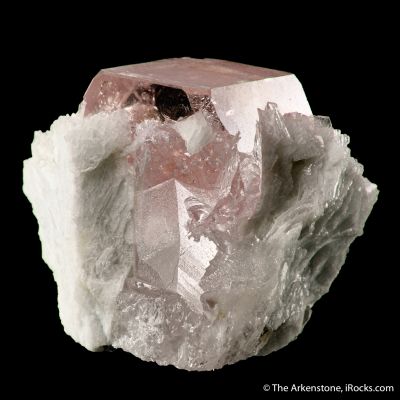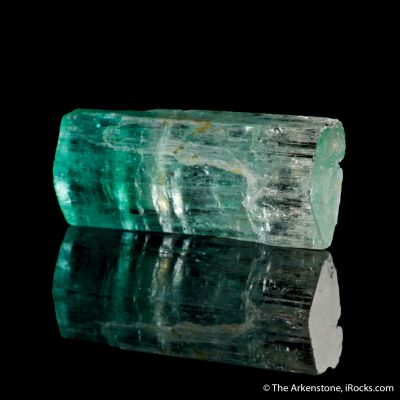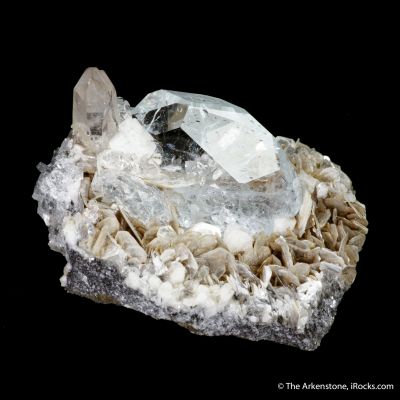- V22-1357
- Beryl var. Aquamarine
- Fano Mine, Cahuilla Mining Dist., Riverside Co., California, USA
- Small Cabinet, 7.4 x 3.5 x 2.6 cm
- Ex. William (Bill) Larson
- SOLD
Here is a trio of glassy and gemmy to translucent Aquamarine crystals from the notable Fano Mine in Riverside County, a part of the famed pegmatite district of Southern California. It has provenance from the Cal Graeber and Bill Larson San Diego County collections. Cal collected superb small cabinet pieces and Bill collected (and still does collect) everything San Diego, although he sold us a large suite of display specimens in 2019, this among them. It is a lovely light blue-green, very glassy and very transparent piece with three component crystals that are 3.7, 4.7 and 5.5 cm long, respectively. All three of the Aquamarines are doubly-terminated with flat, pinacoid terminations at one end and complex, multiple terminations at the other that look as though they have been partially etched. The main crystal in the middle and the one to its right have large, very gemmy areas in them that are just gorgeous! The third crystal is largely translucent with some gem areas. The backside of the piece is decorated with several, small, 1 to 5 mm, subhedral, jet-black Schorl Tourmaline crystals. This is a very showy Aqua, and a significant locality piece for Southern California pegmatite collectors. This might be from the early 1900s era of mining here. From the important and long held personal collection of William "Bill" Larson. According to mindat.org: The deposit was first discovered by Bert Simmons in 1902, and is best known for its production of well-crystallized schorl and gem aquamarine, as well as pink tourmaline and spodumene. Two contiguous lode mining claims (Big Pink and Little Blue lodes; MS 4800) are commonly referred to as the Fano Mine, and aggregate approximately 37.54 acres. The property is private land, patented January 29th, 1912 by the Fano Kunzite Tourmaline Mining company. 58.06 grams. Crystals like this from California, or any USA pegmatites, are extremely rare.

